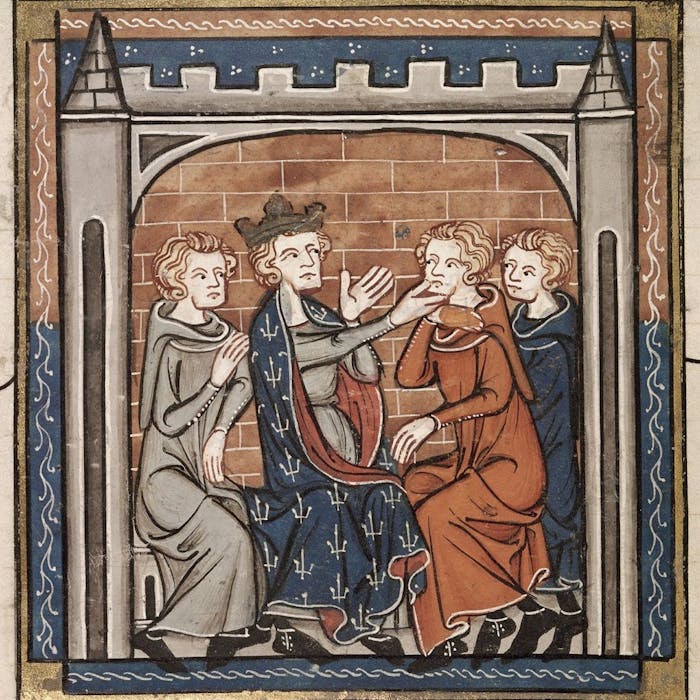
Scrofula: The King's Evil
The disease scrofula is not heard of today, but appears in European history, first mentioned by Herodotus in 400 BC. It was also known as the "King's Evil" because many European monarchs claimed to be able to heal the disease by the power of their touch.
Scrofula is, in fact, a form of tuberculosis that occurs outside the lungs. The symptoms include lesions on the neck and facial disfigurement. Samuel Johnson, the eighteenth-century author who wrote the first comprehensive English dictionary, suffered from scrofula as a child.
The true reason why scrofula was contracted was not known until the late nineteenth century.
Because scrofula seemed to affect whole families, it was assumed that it was a hereditary, rather than an infectious disease.
One of the common ways it spreads is though infected milk—either from an infected mother's or wet nurse's breast milk, or through contaminated cow's milk fed to infants or children.
Before Koch's postulates of disease or pasteurisation of milk in the 1880s, there was little understanding of the connection between bacteria and illness. Cows often carried bovine tuberculosis, and milk bottles were not sterilised.
It was not until regulations about food safety were standardised, milk was regularly pasteurised, and dairy cleanliness maintained that scrofula ceased to be a health threat in industrialized nations.
However, as with other forms of tuberculosis, the disease is making a comeback due to antibiotic resistance, immigration from endemic countries, and the abandonment of aggressive tuberculosis screening and control measures.
Further reading
Links to external websites are not maintained by Bite Sized Britain. They are provided to give users access to additional information. Bite Sized Britain is not responsible for the content of these external websites.
